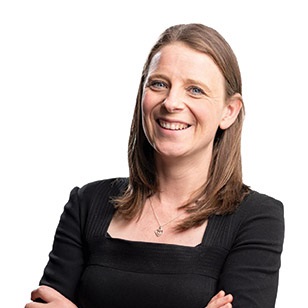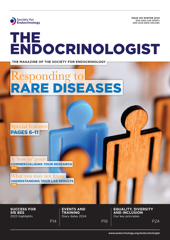Rare diseases – which include endocrine conditions that present with complex disease phenotypes and require care from multiple specialists – pose unique challenges, not only for the people affected by them, but also for researchers.
Researchers frequently tell us about the hurdles they face in translating and implementing their scientific discoveries. Having spent the last five years supporting rare disease research, we at LifeArc, a self-funded medical research charity, have been working on ways to tackle some of these challenges. We are hoping to address some of them through our Rare Disease Translational Challenge, committing up to £100 million to the rare disease ecosystem over the next few years.
‘Research can happen more quickly when working with the right people at the right time, and with the right infrastructure in place. It’s also a place where charities like us can play a key role.’
LEVERAGING INVESTMENT
One thing we often hear is that there is limited access to funding, or challenges securing downstream investment. This can be especially difficult when trying to leverage investment from industry when patient numbers are low.
There are several things that can help. First, charities like us can often take risks that a commercial company might not, especially in early-stage research, de-risking projects and making commercial investment more likely.
Secondly, as a sector, there is a need to address market dynamics to ensure there are sustainable models for rare disease treatments, which not only get them to market, but also help keep them there and accessible to all. We’ll be exploring options at LifeArc over the coming year.
KNOWLEDGE AND ADVICE
Open access to advice alongside funding is also critical. Intellectual property, regulation, manufacturing and commercialisation are complex processes which many academics have not experienced before, and a lack of support can hold back promising innovations.
Funding streams and initiatives that offer academics support throughout the process can make a real difference.
For example, in 2021, we established three Innovation Hubs for Gene Therapy, along with the Medical Research Council and the Biotechnology and Biological Sciences Research Council. These offer academics access to facilities that are Good Manufacturing Practice (GMP)-compliant for clinical trials, alongside essential translational support and regulatory advice.
We also have £5 million available annually through our Gene Therapy Innovation Fund, which is open to all, and includes advice and support from the Hubs. Similarly, our Philanthropic Fund provides grant support to academics who have promising therapeutics, device or diagnostic projects for rare diseases, and we offer advice on intellectual property and commercialisation throughout the process.
‘We’ve been delighted at the readiness of the community to work in this way, and it shows the potential for an even more joined up approach as we move forwards.’
INFRASTRUCTURE AND COLLABORATION
Research can happen more quickly when working with the right people at the right time, and with the right infrastructure in place. It’s also a place where charities like us can play a key role.
For example, we have recently announced our intention to fund four Translational Rare Disease Centres (TRDCs), opening next year. They will serve as focal points for rare disease research translation, knowledge-sharing and engagement with the patient community in the UK.
As neutral partners, charities can often bring together research groups and institutions across specialties, and help challenge the status quo. And, as part of the TRDC process, we’ve encouraged collaborative applications where we’ve seen synergies between research groups and institutions.
We’ve been delighted at the readiness of the community to work in this way, and it shows the potential for an even more joined up approach as we move forwards.
While there are significant challenges facing rare disease researchers, that also means there are opportunities for real change. We’re excited at the prospect of working with the wider community in order to get innovations to patients more quickly.
CATRIONA CROMBIE
Head of Rare Disease Translational Challenge, LifeArc






